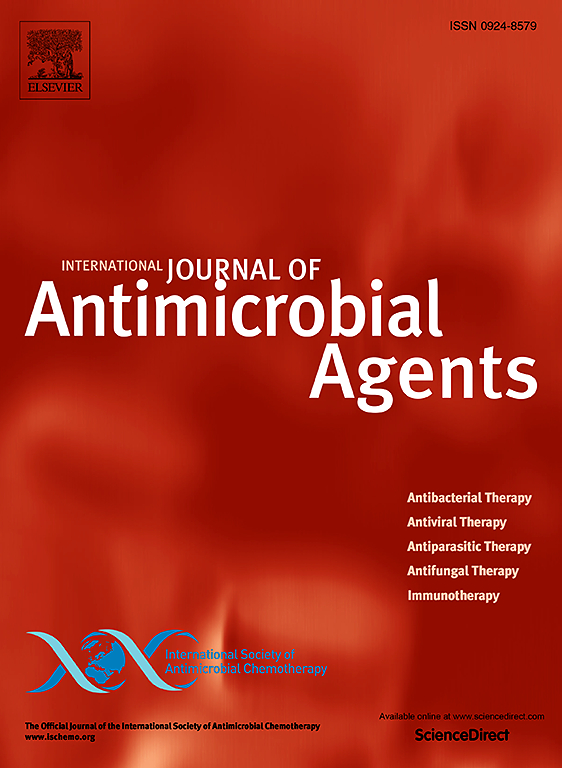The efficacy and underlying mechanisms of berberine in the treatment of recurrent Clostridioides difficile infection
IF 4.9
2区 医学
Q1 INFECTIOUS DISEASES
International Journal of Antimicrobial Agents
Pub Date : 2025-02-20
DOI:10.1016/j.ijantimicag.2025.107468
引用次数: 0
Abstract
Recurrent Clostridioides difficile infection (rCDI) is a global health threat that has received considerable attention. Berberine (BBR), a natural pentacyclic isoquinoline alkaloid, has been used as a cost-effective treatment for intestinal infections in Asia for many years. However, the effect of BBR on rCDI is not clear. The efficacy and underlying mechanisms of BBR were evaluated in a vancomycin-dependent rCDI mouse model and an intestinal organoids model. The study findings showed that BBR treatment alleviated the severity of infection and increased survival rate in rCDI mice. Mechanistically, BBR alleviated intestinal epithelial damage with higher Occludin expression, suppressed some inflammatory pathways and reduced the level of inflammatory factors in both the caecum and serum. Moreover, 16S rRNA sequencing analysis indicated that BBR reshaped the gut microbiota by increasing the abundance of Firmicutes and reducing the abundance of Proteobacteria. At genus level, BBR treatment increased levels of Blautia and Bilophila, and reduced levels of Proteus. In addition, acetic acid, one of the short-chain fatty acids (SCFAs), was also increased after BBR treatment in rCDI mice. Collectively, BBR exerted a protective effect in rCDI via multiple underlying mechanisms and is a potential drug candidate for alleviating rCDI, but further research is needed in this area.

小檗碱治疗复发性难辨梭菌感染的疗效及潜在机制。
复发性艰难梭菌感染(rCDI)是一种全球性的健康威胁,受到越来越多的关注。小檗碱(BBR)是一种天然的五环异喹啉生物碱,多年来一直被用作治疗肠道感染的一种经济有效的方法。然而,其对rCDI的影响尚不清楚。在万古霉素依赖的rCDI小鼠模型和肠道类器官模型中评估BBR的疗效和机制。我们的研究结果显示,BBR治疗减轻了rCDI小鼠的严重程度,提高了生存率。机制上,BBR可减轻Occludin高表达的肠上皮损伤,抑制部分炎症通路,降低盲肠和血清中炎症因子水平。此外,16s rRNA测序分析表明,BBR通过增加厚壁菌门(Firmicutes)的丰度和减少变形菌门(Proteobacteria)的丰度来重塑肠道微生物群。在属水平上,BBR处理增加了Blautia和Bilophila的水平,降低了Proteus的水平。此外,BBR处理后,rCDI小鼠的短链脂肪酸(SCFAs)之一乙酸也有所增加。总之,BBR通过多种潜在机制对rCDI发挥保护作用,作为缓解rCDI的潜在候选药物值得进一步研究。
本文章由计算机程序翻译,如有差异,请以英文原文为准。
求助全文
约1分钟内获得全文
求助全文
来源期刊
CiteScore
21.60
自引率
0.90%
发文量
176
审稿时长
36 days
期刊介绍:
The International Journal of Antimicrobial Agents is a peer-reviewed publication offering comprehensive and current reference information on the physical, pharmacological, in vitro, and clinical properties of individual antimicrobial agents, covering antiviral, antiparasitic, antibacterial, and antifungal agents. The journal not only communicates new trends and developments through authoritative review articles but also addresses the critical issue of antimicrobial resistance, both in hospital and community settings. Published content includes solicited reviews by leading experts and high-quality original research papers in the specified fields.

 求助内容:
求助内容: 应助结果提醒方式:
应助结果提醒方式:


